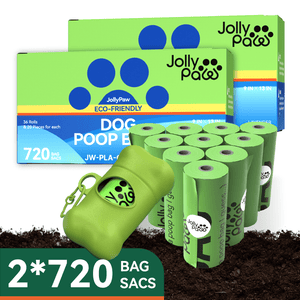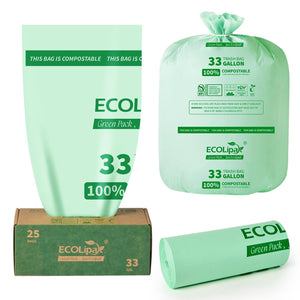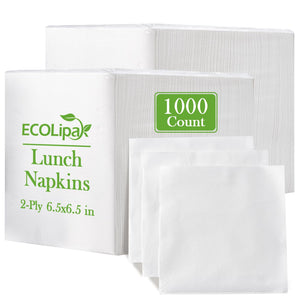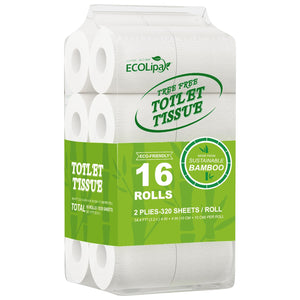Certified compostable bags are the greener choice for handling pet poop. This remains true even when the bags end up in a landfill. These eco-friendly bags come from plant-based materials. They break down without creating harmful microplastics. This differs from most bags labeled "biodegradable," as a standard plastic bag can take over 500 years to degrade. The scale of the issue is significant.
U.S. Dog Population: 70 to 80 million
Annual Waste Per Dog: ~270 pounds
Choosing certified compostable poop bags for dogs is a simple switch that makes a real difference.
Key Takeaways
Choose certified compostable dog poop bags. They are made from plants and break down without making harmful microplastics.
Avoid bags labeled only 'biodegradable.' These often break into tiny plastic pieces that harm the environment.
Certified compostable bags are better even in a landfill. They do not create lasting microplastic pollution.
Look for certification logos like BPI or TÜV AUSTRIA. These show the bags meet strict environmental standards.
Dispose of dog poop properly. Use special composting services or a home composter. If not, throw certified compostable bags in the trash.
The 'Biodegradable' Bag Myth
Many people choose bags labeled "biodegradable" thinking they are making an eco-friendly choice. However, this term is often misleading and contributes to a significant environmental impact. The U.S. Federal Trade Commission (FTC) has strict rules for these claims. A company cannot label a product as biodegradable if it goes to a landfill unless they prove it breaks down completely within one year. Most plastic-based biodegradable bags do not meet this standard.
The Microplastic Problem
So-called "biodegradable" plastic bags often contain additives that cause them to break apart. They do not truly biodegrade. Instead, they fragment into countless tiny pieces called microplastics. These particles create a serious long-term issue of plastic waste.
These microplastics do not disappear. They remain in the environment for a very long time, causing long-term harm to ecosystems.
Once in the soil, these particles have a damaging impact on the health of our ecosystems. Studies show that microplastics can:
Reduce the growth and health of earthworms.
Harm essential fungi in the soil.
Be eaten by birds and other wildlife.
Leach harmful chemicals into the ground.
The Landfill Reality
The journey of a poop bag usually ends in a landfill. Modern landfills are designed to be oxygen-free spaces. Waste is tightly compacted to save space, which creates an anaerobic (no oxygen) environment. This design choice is a major problem for most biodegradable bags.
The degradation process for these plastics requires oxygen and UV light. Landfills lack both. Without them, the bags cannot break down as advertised. They simply sit there, much like regular plastic, or fragment into the microplastics mentioned earlier. This reality makes the "biodegradable" label meaningless for products destined for the trash.
Why Certified Compostable Bags Are Better
Choosing certified compostable bags over other options is a significant step toward a more sustainable routine. These products offer clear environmental benefits that start with their materials and end with their decomposition. They represent a truly eco-friendly way to manage dog poop.
What 'Certified Compostable' Means
The term "certified compostable" is not just marketing language. It is a specific, verifiable claim. It means a product is made from materials that can break down naturally into non-toxic components. These bags are typically made from a blend of renewable, plant-based materials.
Key ingredients often include:
PLA (Polylactic Acid): A bioplastic derived from renewable resources like corn starch.
PBAT (Polybutylene Adipate Terephthalate): A biodegradable polymer that helps provide strength and flexibility.
Cornstarch: A simple organic substance that helps the material decompose.
For a bag to earn a compostable certification, it must pass strict tests defined by international standards. These certifications act as a trust signal for consumers. The two most recognized standards are Europe's EN 13432 and North America's ASTM D6400.
To meet the EN 13432 standard, a product must prove it:
Breaks down with the help of microorganisms.
Disintegrates into small pieces that are no longer visible in the final compost.
Has no negative effect on the composting process or the quality of the compost.
Contains very low levels of heavy metals.
Does not harm plant life.
The ASTM D6400 standard in the United States has similarly strict requirements, which are verified by independent organizations like the Biodegradable Products Institute (BPI).
Test Requirement |
Duration |
Pass Level |
|---|---|---|
Disintegration |
84 days |
At least 90% of the material must pass through a 2.0-mm sieve. |
Biodegradation |
Up to 6 months |
At least 90% of the carbon must convert to CO2. |
Safety (Toxicity) |
14-21 days |
The final compost must support plant germination and growth at over 90% compared to control compost. |
These rigorous tests ensure that certified compostable poop bags for dogs are a genuinely sustainable choice for the environment.
The Advantage in a Landfill
It is true that compostable bags do not break down ideally in an oxygen-free landfill. The perfect end-of-life for a compostable product is an industrial compost facility. However, most dog poop bags end up in the trash, and even in a landfill, certified compostable bags are still a far better option than plastic-based "biodegradable" bags.
There are two main reasons for this.
First, compostable bags are made from renewable resources. The production of corn-based PLA, for example, can lower greenhouse gas emissions by 25% compared to standard plastic. This means their environmental benefit begins long before disposal. Choosing these bags helps reduce our reliance on petroleum, a non-renewable resource.
Second, and most importantly, they do not create a legacy of microplastic pollution.
Unlike plastic-based biodegradable bags that fragment into tiny toxic particles, certified compostable materials are designed to break down naturally. Studies show these materials disintegrate rapidly, leaving behind almost no microplastic particles.
While a landfill is not a compost pile, the plant-based materials in compostable bags will not persist for centuries. They will not fragment into the tiny plastic pieces that contaminate our soil and water. This single difference makes them the clear winner for any eco-conscious dog owner.
Your Guide to Eco-Friendly Pet Waste Bags
Making the right choice is easier than you think. Following a few simple steps ensures you select truly eco-friendly pet waste bags and dispose of them responsibly. This guide will help you navigate the options and avoid common pitfalls.
Step 1: Choose Certified Compostable Poop Bags for Dogs
The most important step is to select bags that are genuinely compostable. You can identify these products by looking for specific labels and features on the packaging.
What to Look For:
The Word 'Compostable': The packaging must explicitly state the product is "compostable." Vague terms like "biodegradable" or "degradable" are not a substitute.
Third-Party Certification Logos: Look for logos from recognized certifiers. These marks prove the product meets strict scientific standards. Key logos include BPI (North America), TÜV AUSTRIA (OK compost HOME/INDUSTRIAL), and references to the EN 13432 standard (Europe).
Specific Coloring: Certified compostable bags are often tinted green, beige, or brown to distinguish them from regular plastic.
Finding a reliable brand that meets these standards is key. Ecolipak offers a perfect sustainable choice with its 1 Gallon Eco-friendly Dog Poop Bags with Dispenser. These bags are a great example of a high-quality, certified product.
They are made from plant-based materials and are EN 13432 certified, guaranteeing they are a truly compostable option. Many high-quality compostable bags are designed to be extra thick (around 18-21 microns) to ensure they are durable and 100% leak-proof. This prevents tears and keeps odors contained. The Ecolipak bags also feature a pleasant lavender scent to help mask odors, making the daily task of cleaning up after your dog a little more pleasant.
Step 2: Properly Disposing of Dog Poop
Once you have the right bag, proper disposal is the next step. While the ideal destination is a compost facility, not all are equipped to handle pet waste. Here is a simple guide to the best disposal options.
Your Disposal Decision Tree 🌳
Best Option: Specialized Dog Waste Composting Service. Some areas have services that specifically collect and compost pet waste. These facilities use high temperatures to safely break down pathogens. This is the most eco-friendly method.
Good Option: Home Dog Waste Composter. For dedicated gardeners, a separate, well-managed home compostable solution for pet waste is possible. This compost should never be used on edible plants due to potential pathogens. This provides a good home compostable solution.
Good-Enough Option: The Trash Can. Most municipal composting programs do not accept pet waste because their systems may not reach the high temperatures needed to kill harmful bacteria and parasites. If the first two options are not available, throwing the compostable bag in the trash is still far better than using a plastic bag. It will not create microplastics in the landfill.
Step 3: Avoid Common Greenwashing Traps
Many companies use misleading marketing to make their products seem more environmentally friendly than they are. Learning to spot these claims helps you make a truly informed decision for the environment.
A common trap is the use of EPI additives in plastic bags. These chemicals cause the plastic to break into smaller and smaller pieces, but it never truly biodegrades. It simply becomes microplastic pollution.
Watch out for vague and unregulated terms. These words sound good but often have no scientific meaning.
Misleading Claim |
What It Really Means |
What to Look for Instead |
|---|---|---|
"Eco-friendly," "Earth-friendly," "Green" |
These are vague marketing terms with no official standard. |
Specific, verifiable claims like "100% Compostable." |
"Biodegradable" (on a plastic bag) |
The bag will likely fragment into microplastics, not disappear. |
A "Certified Compostable" logo (BPI, TÜV AUSTRIA). |
"Made with EPI Technology" |
The bag contains an additive that helps it break into tiny plastic pieces. |
"Made from plant-based materials" or "PLA & PBAT." |
By choosing certified compostable poop bags for dogs and avoiding these greenwashing traps, you can confidently reduce your dog's impact on the planet. These small changes in our daily pet waste solutions contribute to a healthier ecosystem for everyone.
Making a truly green choice for the environment means looking past misleading labels. For a healthier planet, pet owners should always choose certified compostable bags over those simply called "biodegradable." This simple eco-friendly switch helps reduce plastic pollution one walk at a time.
Reduce your pet's plastic paw-print. Green Pack, Go for ECOLipak.
FAQ
What is the main difference between biodegradable and compostable?
A compostable bag breaks down into natural elements in a compost setting. A "biodegradable" plastic bag often just fragments into tiny microplastics. True compostable bags must pass strict certification tests to prove they are safe for the environment.
Why are compostable bags better if they end up in a landfill?
Compostable bags come from renewable plant resources. Most importantly, they do not create microplastic pollution. While a landfill is not ideal, these bags avoid leaving a legacy of tiny plastic particles that harm soil and water for centuries.
Can I put dog poop in my city's green bin?
Most municipal composting programs do not accept pet waste. The systems may not reach the high temperatures needed to kill harmful bacteria from the poop. Always check your local waste management rules before adding these bags to a green bin.
How can I be sure a bag is truly compostable?
Look for official certification marks on the package.
BPI (Biodegradable Products Institute)
TÜV AUSTRIA (OK compost HOME/INDUSTRIAL)
References to the EN 13432 standard
These logos prove the product meets scientific standards for compostability.









